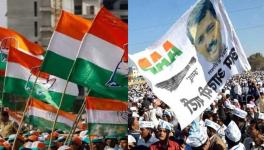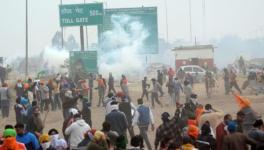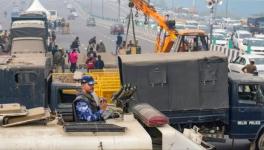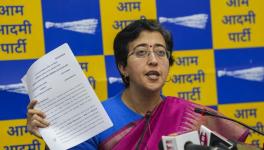FIFA Under-17 World Cup 2017: India's Debut Attempt to Bring Football Back to its Former Glory
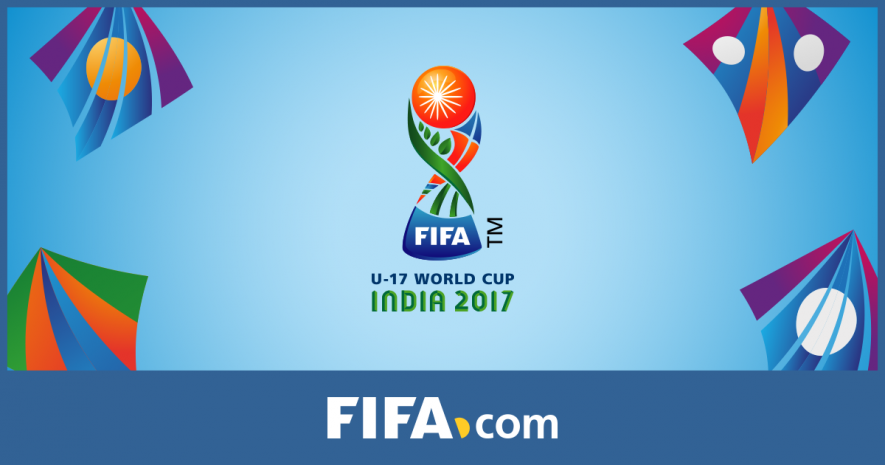
Newsclick Image by Nitesh Kumar
With 17 days to go for the FIFA Under 17 World Cup we are kicking off our coverage on .in, and our facebook and youtube channels. The tournament kicks off on October 6 in New Delhi with Colombia taking on Ghana in the first game. Those two nations will be joined by 22 others, from all six continents, for three weeks of the best junior football on the planet.
A few days ago we visited the Indian camp in Bengaluru to get an update on the team’s preparations as they enter the final phase. This will be the first time an Indian team will participate in the finals of a FIFA World Cup and the tournament has been widely proclaimed as a massive opportunity to begin the process of bringing Indian football back to its former glory.
In 1951, when New Delhi hosted the first Asian Games, India was the strongest football team on the continent. The host nation dominated the opening rounds. K.L. Vardaraj, who was in goal at the 1948 Olympic Games as well, kept a clean sheet through the tournament. In the final, Sahu Mewalal scored the only goal in that final against Iran and ended the tournament as top scorer(4). Mewalal was born in Daulatpur in Bihar and started playing football after his father moved to Kolkotta to work at Fort William. Not even in his teens, Mewalal was noticed by an Army sergeant and taken to the Morning Star club where he began a spectacular 20-year career in football. Present Indian football fans will recall Bhaichung Bhutia’s agility on the field and proficiency at scoring the spectacular bicycle kick. It was Mewalal, though, who first made the bicycle his calling card long before Bhutia was even an idea in his parents’ minds. The 50s and 60s were a golden period for football in the country. A stream of talented players was coming through the ranks at clubs such as East Bengal, Mohun Bagan, Bombay and Madras. The team played at four consecutive Olympics Games from 1948 to 1960—at the time still the preeminent football tournament in the world. In 1956 India came within one victory of an Olympic medal but lost to Bulgaria in the bronze medal match at the MCG. Six years later a new generation—the likes of Peter Thangaraj, Chuni Goswami, PK Banerjee, Jarnail Singh—became Asian champions again. This time they beat Japan and South Korea on the way to gold.
The 50 years since have been a struggle. While the Asian Tigers prospered, India struggled to feed her rapidly growing population. The sport remained in the hands of an old boys’ club—one that was virtually impossible to get into. It became a source of power and popularity for administrators and politicians who fought each other to retain control but did little to advance the careers of the athletes under their care. Now, it is commerce that is driving the resurgence of a footballing India. A sport that has always been played in massive numbers across the nation, football has never had a popularity problem. Nor does India lack the talent. But it is a poor market that escaped global attention for want, perhaps, of buying power. Today, with a burgeoning middle class that has increased access to information and spending muscle, India is the last, vast untapped market for the game. Driven, largely, by this massive commercial potential football in India is starting to receive the investment required to lift it out of the 1980s and into the 21st century.
In Bengaluru, we met the boys who are part of the first wave of this great experiment. They—and their peers in several academies that have emerged over the past five years—are learning to play the game the same way it is taught all over the world. On October 6, they will play against a team that has featured in all 16 editions of the under 17 World Cup. Timothy Weah might be one of the US players on the pitch that day. Son of Ballon d’Or winning Liberian striker George Weah, Weah Jr. signed a professional contract with Paris Saint-Germain in July this year. Like him, most of the kids on the US team have been receiving professional training since well before they hit double digits. The Indian boys, although the best-prepared team the country has ever seen, have simply not had the time to match that experience. However, the wheels have been set in motion of a process that is unlikely to be reversed. And, as we found in Bengaluru—while meeting the team, its coaches and even senior team captain Sunil Chhetri—as long as our expectations are realistic, India will not be disappointed.
India vs USA Oct. 6, 2000hrs, New Delhi;
India vs Colombia Oct. 9, 2000hrs, New Delhi;
India vs Ghana Oct. 12, 2000hrs, New Delhi;
Disclaimer: The views expressed here are the author's personal views, and do not necessarily represent the views of Newsclick.
Get the latest reports & analysis with people's perspective on Protests, movements & deep analytical videos, discussions of the current affairs in your Telegram app. Subscribe to NewsClick's Telegram channel & get Real-Time updates on stories, as they get published on our website.













